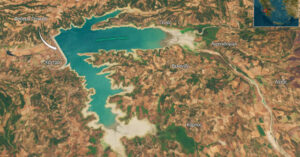The scientific community is sounding the alarm over the water scarcity alert that has been sounded in many parts of the country. A total of 14 municipalities in the country have been declared a state of emergency by the General Secretariat of Civil Protection. Among them are five municipalities of Crete, Serifos, Sifnos, Leros, Poros, Spetses, the municipality of Sami in Kefalonia as well as areas in Corinth, Alexandroupolis and Xanthi.
The situation is made more difficult by the prolonged high temperatures combined with reduced rainfall in several areas at the same time as the summer tourist season is heading towards its peak.
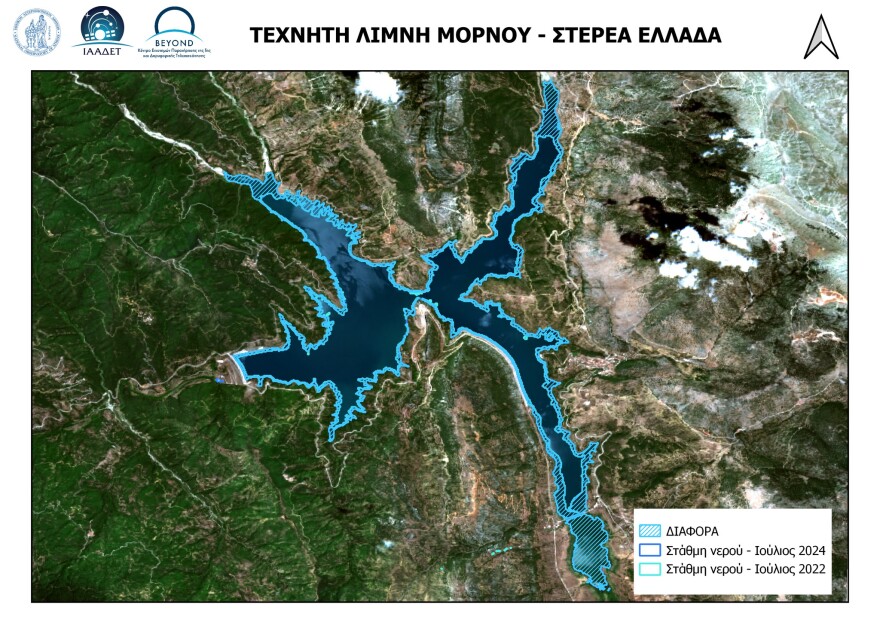

“Indeed, this year in many areas in the east of the country there is a 40-50% reduction in rainfall for the period October 2023 to April 2024, compared to the average of the previous decade. In Attica, for example, we had a 45% reduction, while we had a reduction in Crete and especially in Eastern Crete and Agios Nikolaos, it was of the order of 60%”, explains to the Athens-Macedonian News Agency the Emeritus Professor at the School of Civil Engineering of NTUA, Maria Mimikou. However, she clarifies that water scarcity can exist even without drought.
“Water scarcity in Greece is an endemic phenomenon I would say, it is the deficit between water supply and demand, the available water. So water scarcity exists because of drought, but there is a possibility to have water scarcity without drought. Many eastern countries have a deficit, it just seems more so to us as the dry and arid years continue,”
Mimiku noted.
As Mimiku points out, dry years and open water consumption are causing water scarcity in many areas of Greece. For this reason, there is a need for restrictions and decisions to be taken.
“There is a strong bell ringing in Greece. In every water use, whether it is water supply or irrigation – especially in irrigation – the pumping methods must be improved to increase the productivity ratio of agricultural water,” Mimiko explains, adding that the issue of water resources management needs to be put on the right footing.
“There should be a centralized water resources management body that will operate decentralized and centrally under a national strategic plan for water resources assessment, utilization and management, and from there onwards the governance models should follow as they exist,” Mimiku says.
Large drop in water levels at artificial Lake Mornos and the Aposelemi dam in Crete – Low water levels at artificial Lake Pinios in Ilia
A large drop in water levels compared to 2022 is observed in two important water reservoirs in our country, according to satellite data analysis by the BEYOND Operational Unit of IADET/EEA. Specifically, in the artificial lake Mornou, in Central Greece and in the Aposelemi dam, in Crete, following analysis applied by the Beyond EO Centre NOA with Sentinel-2 satellite images.
As explained by the BEYOND Operational Unit of IADET/EOE, quoting relevant maps, “it is clear that in both cases the water level has decreased and the difference in drop between 2022 and 2024 is shown with a diagram. The area of the difference covers about 4700 acres and 600 acres respectively on the 2 maps.”
For its part, the climatebook page taking into account satellite data processed by the Sentinel-2 satellite on July 2, 2023, finds that the total area of the lake’s surface was ~16.5 km², while on June 26, 2024, it was estimated to be ~12.8 km². At this time, the lake’s area is 15-20% smaller than the average since 2010.
“The area of the artificial Mornos Lake for this period is estimated to be the smallest since 2010 when very high-resolution satellite observations were available. It is noted that the artificial Lake of Mornos is the main water supply reservoir of Athens,” the climate book notes.
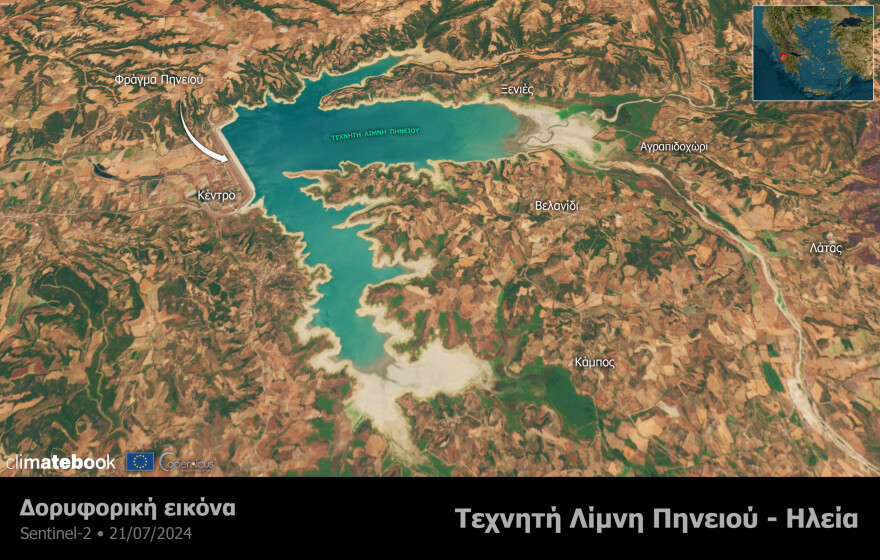
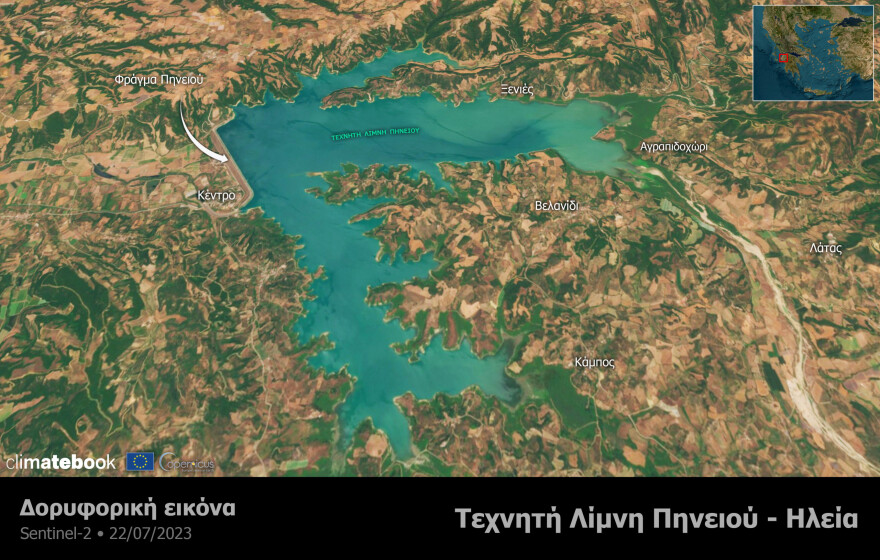
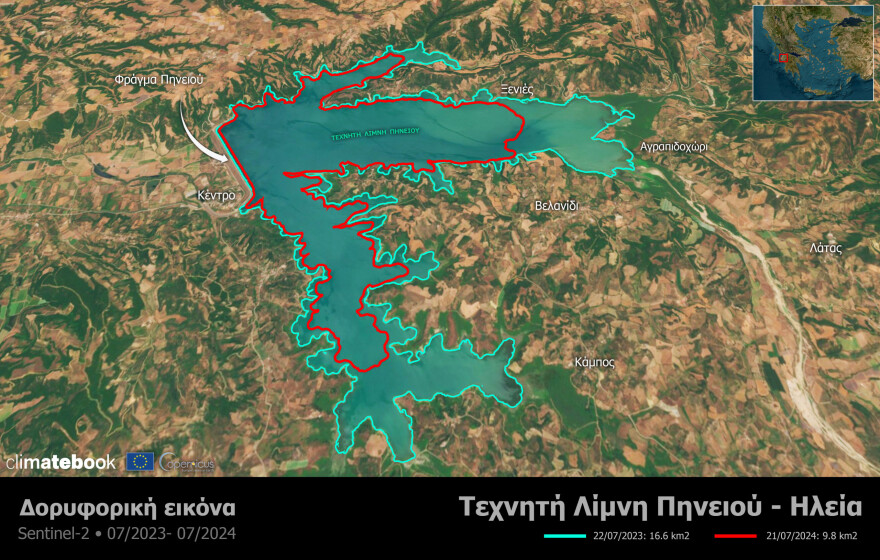
The above data are of concern to the scientific community, which is “ringing the bell” for Attica as well.
“The Mornos has reached the 700 million cubic meter limit, which means that the bells have been rung. If the same situation continues, it can endure with the same consumption and without measures for another 2 years I don’t know. It is already marginal. There is no way we can live another year like this without thinking about water-saving measures, especially for agricultural water, as 80% of it is allocated for agricultural production,” Mimikou noted to APE-MPA.
At the same time, a significant reduction has been observed recently in the area of the artificial lake of Pinios in Ilia due to the absence of rain, high temperatures, and as a result of the very mild winter with limited snowfall.
More specifically, according to the climate book and taking into account the satellite data processed by the page from the Sentinel-2 satellite, on 22 July 2023 (one year ago) the total surface area of the lake was ~16.6 km², while on 21 July 2024 it was estimated to be ~9.8 km². Compared to the average since 2010, the lake area is currently 35-40% smaller.
As explained by the physicist-meteorologist and scientific collaborator of meteo.gr and climate book, Stavros Dafis, in 2008, when water scarcity phenomena were also observed in most of the country, the numbers in terms of area and volume of water in the reservoirs were even worse. “This year, although we are not yet close to 2008, there are still almost two months to go before the autumn rains start, we will see slightly worse numbers in the coming months,” he noted.
As of July 2023, according to Duffy, the rainfall that has occurred almost every month is below the 30-year average. “This is mainly the case in eastern mainland Greece, the Aegean islands, Crete and the Dodecanese, and the Peloponnese. Kyparissia is excluded, but most of the Peloponnese is also on orange alert, in terms of lack of rainfall and dryness of the soil,” he stresses, adding that the two heat waves of June and July exacerbated this drought situation. “The soil until May, until April was not so dry in these areas. But a sudden drought happened. Sudden drought starts when we have a sudden rise in temperature of course, stronger than normal winds, and more hours of sunshine than normal, which enhances evaporation. So the trees are stressed through evapotranspiration, but the soil also loses a lot of water in its first few centimeters,” he stresses to APE-MPA.
Ask me anything
Explore related questions
